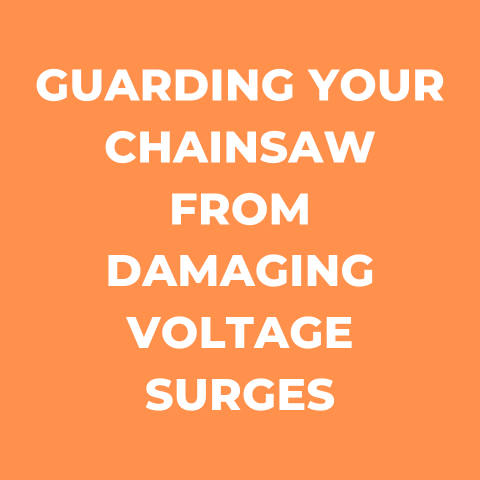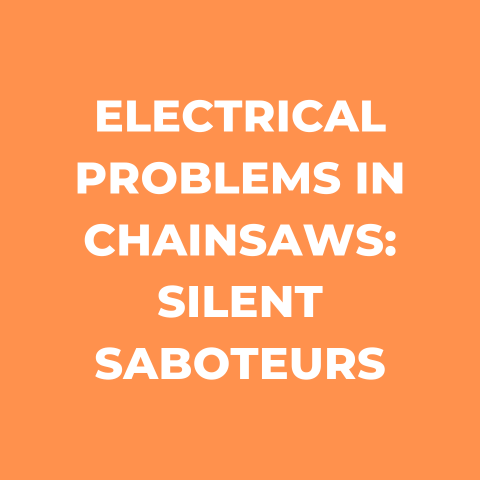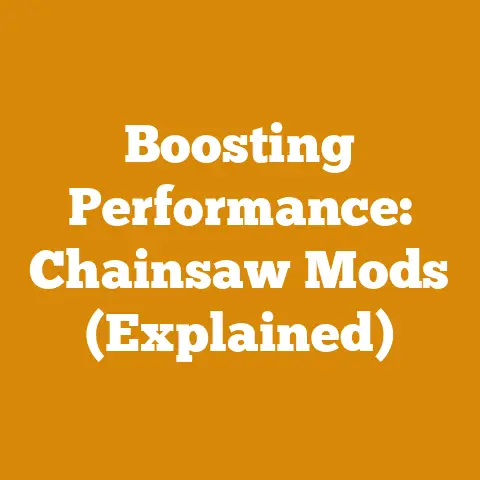Tangled Wires: Cord & Plug Woes In Corded Chainsaw (Guide)
For many homeowners and DIYers, corded electric chainsaws are the go-to choice for occasional tree-limb trimming and basic yard work. Compared to gas-powered models, electric chainsaws are often lighter, quieter, and more affordable. However, dealing with the power cord can be a nuisance. A worn or damaged cord and plug can lead to frustrating performance issues and safety hazards. With some basic troubleshooting and preventive care, you can keep your corded chainsaw running smoothly for years to come.
Common Power Cord Issues
Before diving into solutions, let’s look at some of the most prevalent problems users encounter with corded electric chainsaw cords and plugs:
Fraying or Damaged Insulation
The constant bending and dragging of the cord eventually wears down the outer insulation. Exposed wiring poses a shock risk and can short out the system. Inspect regularly for any cracks, tears, or cuts in the protective coating.
Loose, Ill-Fitting Plug Connection
If the prongs are loose when plugged into the outlet, arcing and overheating can occur. This indicates worn plug blades or a damaged extension cord receptacle. Ensure a tight, secure fit between the plug and outlet.
Faulty or Sticky Switch
A switch that fails to turn the saw on/off or sticks in one position needs replacing. This is a basic component but crucial for safe operation and control.
Kinked or Twisted Cable
Kinks can damage inner wiring and lead to breakage over time. A twisted cord also increases the risk of snagging during use. Untwist and straighten the cord to prevent fatigue.
Shortened Cord
Cutting the cord extremely shortens the operating radius, but more importantly removes the strain relief. This can expose wiring to pull damage. Keep cord length adequate.
Exposed Prongs
If the plug’s plastic molding cracks or breaks away, the metal prongs will be exposed. This poses a major shock hazard. Replace plug cover immediately.
Detached Strain Relief
The strain relief provides extra anchoring for the cord where it connects to the plug or chainsaw. If compromised, the wiring can pull loose from the terminals.
Frequent Power Interruptions
Interruptions can indicate a loose plug connection, damaged cord, faulty switch, or an internal chainsaw electrical issue. Troubleshoot based on when disruptions occur.
Step-by-Step Power Cord Solutions
Now let’s explore how to systematically diagnose and address the most prevalent corded chainsaw cord and plug issues:
1. Inspect Overall Cord Condition
Begin by thoroughly checking the entire cord length for any damage. Look for:
- Cuts, abrasions, or cracks in the outer insulation
- Bulges, kinks, twists, or knots in the cable
- Stiff, brittle, or discolored sections
- Exposed inner wiring at ends or through insulation
Check that the cord relief is intact where the cable enters the saw and plug. Slide cord insulation back to inspect for copper wire exposure.
2. Check Plug Blades
Examine plug blades for any burn marks, pitting, corrosion, or looseness. Test that blades are rigid and do not bend when inserting into outlet. If worn, replace plug or entire cord. Ensure tight fit when inserted into outlet.
3. Test Switch and Power Flow
Verify that power flows consistently through the saw and switch when plugged in. Switch should operate smoothly with no stickiness or need for excessive force. If issues, test with known good cord. If problem persists, service or replace switch.
4. Inspect Cord Joints and Connections
Any joints or connections in the cord can loosen over time. Check that junction points between cord segments or at plug and relief points are tight and secure. Re-connect or re-solder any loose junctions.
5. Check for Internal Damage
Kinks, twists, and knots can cause inner wire damage not visible externally. To test for internal breaks, bend cord sharply at various points while saw is running. If saw stops or loses power, cord needs replacing.
6. Replace Worn Sections
If damage is identified, replace worn sections for safety. When cutting out cord segments, allow adequate excess length so new splices don’t pull apart under strain. Use proper tools for clean cuts.
7. Splice Cord Properly
When splicing cord ends, securely reconnect the inner wires in the proper sequence using proper splices and heat-shrink tubing. Avoid electrical tape repairs which can come loose. Maintain polarity.
8. Test Repaired Cord
After any splicing or replugging, carefully test repaired cord for full power continuity before putting saw back into service. Check live polarity with outlet tester.
9. Install New Strain Reliefs
Replace any missing, loose, or damaged strain relief connectors where cord enters chainsaw or plug. This provides critical anchoring and protection against future wear and tear.
10. Replace Defective Plugs
If plug is worn or damaged beyond repair, install new plug following all color-coding and terminal positioning carefully. Use heat-shrink connections and Avoid loose wiring.
By methodically evaluating and addressing chainsaw cord issues step-by-step, you can restore normal function and a safe operating condition. Always test repairs thoroughly before use.
Preventing Future Cord Damage
Along with properly troubleshooting chainsaw power cord issues as they occur, implementing some ongoing preventive measures will help minimize wear and tear in daily operation:
Maintain Proper Cord Length
When using extension cords, follow the saw manufacturer’s recommended maximum cord length to deliver adequate voltage. For direct operation, keep factory cord length for optimal safety and performance.
Use Outdoors Rated Cords
When working outdoors, use heavy-duty outdoor-rated extension cords specifically designed for rugged use. Look for “STA” stamped cord types. Check cord ratings match or exceed saw power draw.
Avoid Kinking and Twisting
When in use or storing the saw, coil the cord loosely to minimize kinking, twisting, and knotting. Straighten the cord fully to remove any fatigue points before use.
Unplug When Not in Use
Always unplug saw when not in active operation. This prevents accidental startup and removes power from worn sections prone to further damage when idle.
Inspect Before Each Use
Make it a habit to thoroughly inspect the cord before plugging in and starting each chainsaw session. Check for any new cuts, frays, or distortion.
Keep Cord Clear of Blade
Position cord away from your cutting zone and clear of moving blade. Be mindful of snag hazards and operating radius. Use clamps to secure loose sections.
Clean After Use
After completing yard work, use a damp rag to wipe off any dirt, sawdust, or debris from the length of the cord to prevent abrasion damage.
Avoid Dragging on Ground
When moving around the work area, lift the cord and carry the chainsaw to prevent constantly dragging the cord over abrasive surfaces.
Properly Support Cord
Use multiple extension cord hooks to suspend the cord off the ground when operating. Reduce strain on connections by avoiding excess weight pull.
Do Not Overpower Cord
Only use proper gauge cords and outlets rated for the chainsaw’s power draw. Overloading the cord risks insulation breakdown and heat damage.
By integrating these preventive measures into regular use habits, you can significantly extend the operating life of your electric chainsaw’s power cord and avoid many common failures. But with proper diligence and troubleshooting techniques, even worn cords can often be restored to functional condition rather than replaced.
When to Replace vs Repair
Determining whether to repair or fully replace a damaged chainsaw cord depends on several factors:
- Severity of damage – Numerous cuts, tears, and fused/brittle areas necessitate replacement. Localized minor frays or cracks can be repaired.
- Cord thickness – Light duty cords are more prone to internal damage. Heavier 12 or 14 gauge cords hold up to splicing.
- Age and fatigue – An older, worn cord that’s been repaired repeatedly is due for replacement.
- Cost considerations – At around $20-40 for a new cord, replacing is often comparable or cheaper than extensive repairs.
- Availability – Matching exact OEM replacement cords may be difficult to source for older saw models.
- User safety – When in doubt, opt for a brand new factory quality replacement cord to ensure reliability.
Again, always retest any repaired cord thoroughly before putting your chainsaw back into service. And be sure to follow all manufacturer’s recommendations and local electrical codes. With proper care and maintenance, you can keep your electric chainsaw running safely for many seasons to come without getting tangled up in cord and plug hassles.







